Milfoil Harvesting
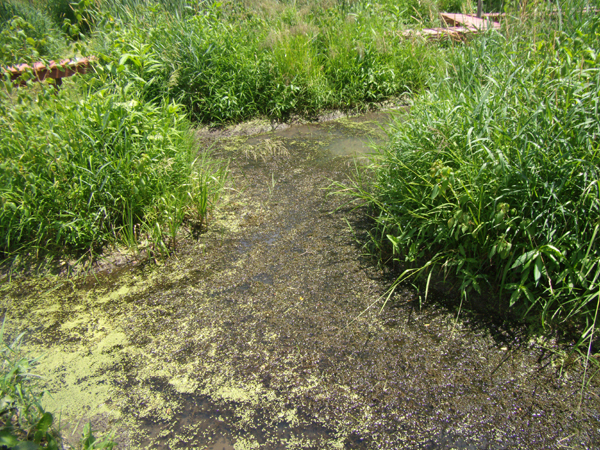
One day, when contemplating my beautiful garden, I realized that
my fastest growing
plant was not in the garden but in the backyard pond. Humm ... how about cattle
feed?
or biofuel? maybe compost for the garden? Yes, that's it -- compost. So for
the next
few days (during the July 4th weekend) I started on the project. And just in
case
milfoil harvesting is one of the things you'd like to know about, I will share
my experience.
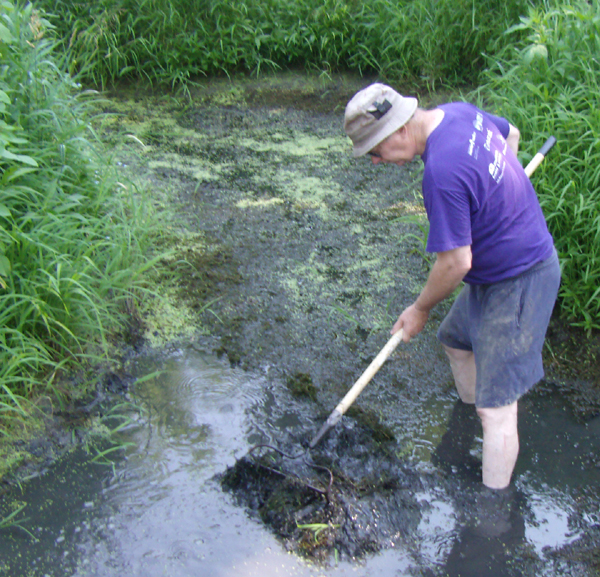
Rake the milfoil and pond muck into a pile.
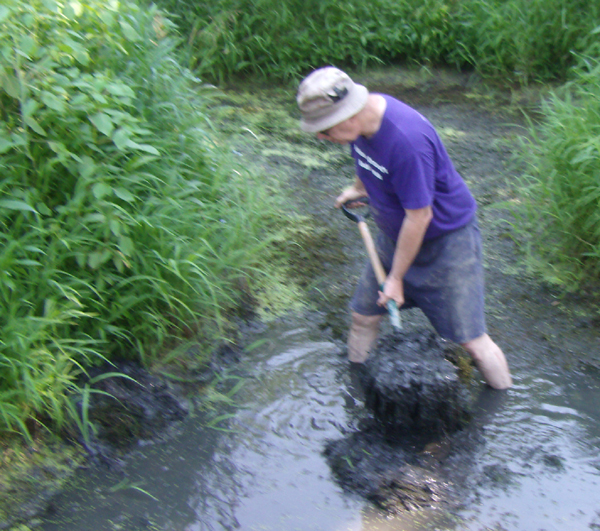
Then fork the pile to the edge of the pond ...
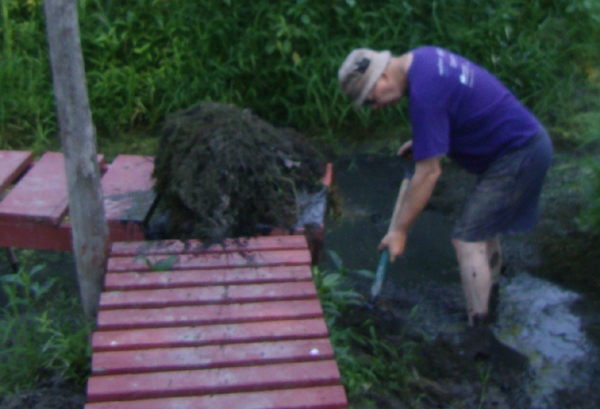
or to a bridge or floating platform.

When the water drains off you've lost half or more of the weight.
You may choose
to let it dry for a few days.
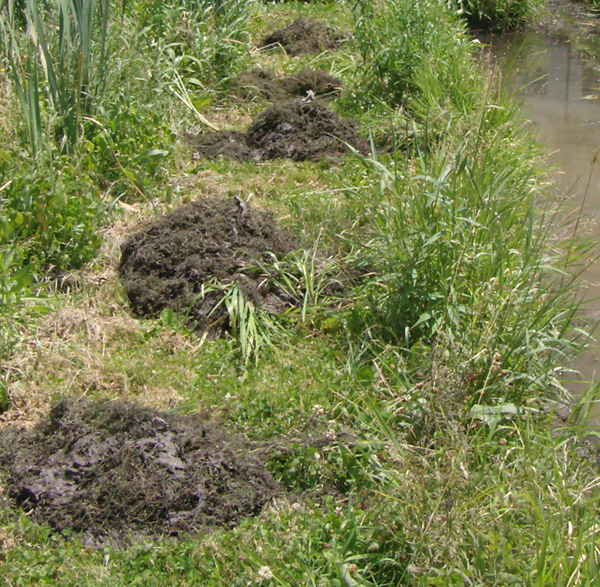
Here's an example of some piles along the pond edge.
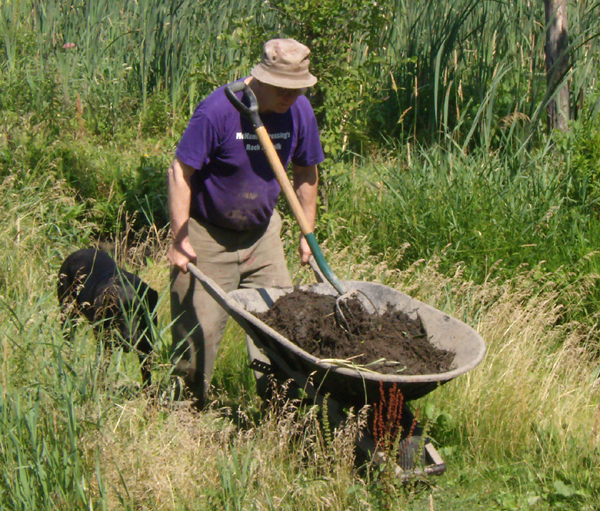
Now, wheelbarrow it to the "tranfer" station or directly
to the garden.
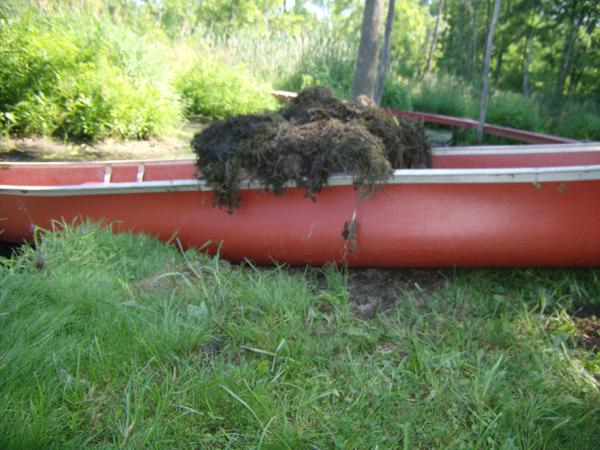
Or float it out of the pond. This method turned out to be difficult
due to the weight
of the water in the canoe. So you might get creative with a floating, drainage
platform
in the pond and then either float the platform to a pond edge or transfer the
drained
milfoil to the canoe.
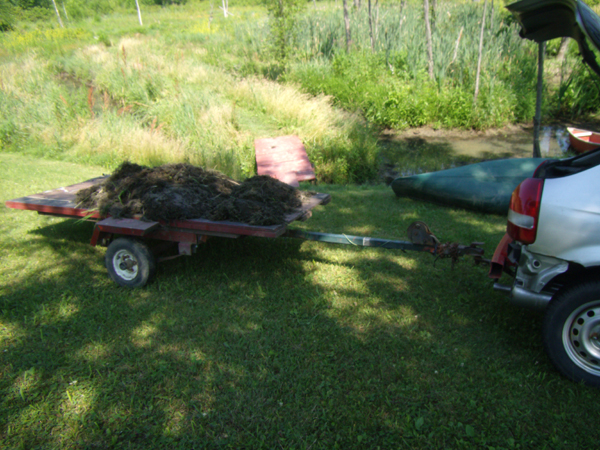
Here's my tranfer vehicle. It saved a lot of energy, i.e., not
having to push the wheelbarrow
up the hill to the garden.
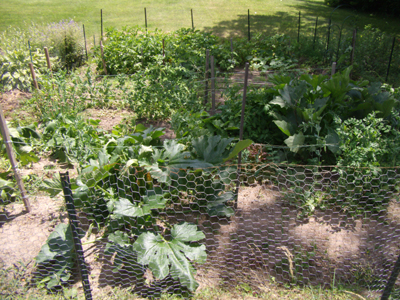 __
__
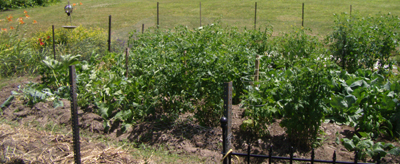
And the final step -- place the mulch in the garden and say goodbye
to weeding and just watch your plants thrive
(that is unless milfoil is toxic to the garden plants -- I'm not sure!).
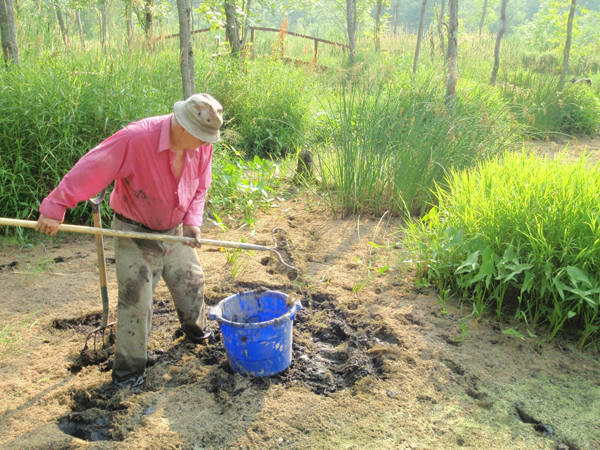
A little help would always be good as granddaughter joins me
for a workout. "Here's how you do it Krystal."
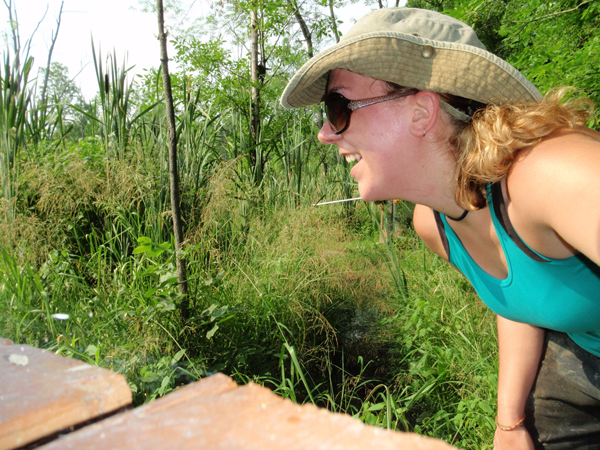
"Wow Gramps, that looks like fun!"
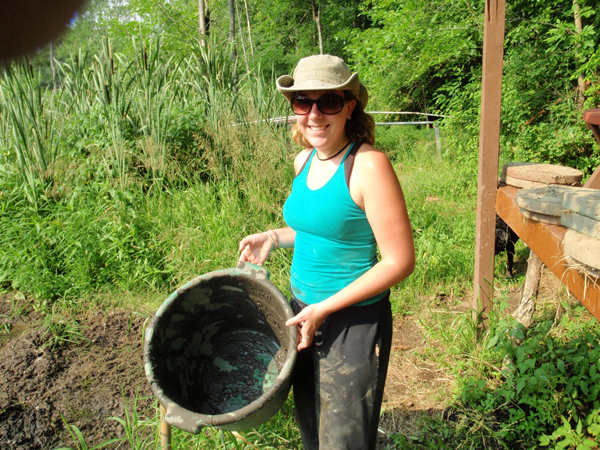
"Just fill this barrel, right?" Twenty barrels later
she collapsed. Hey, she's from Alaska and the temp on this mucking afternoon
was 100 degrees!).
Happy gardening! (and two months later I can
say that the milfoil muck is great fertilizer but not great mulch.
The nutrients probably come more from the pond mud than the milfoil. The muck
grows very healthy weeds, mostly
grasses that come from the pond.









 __
__



